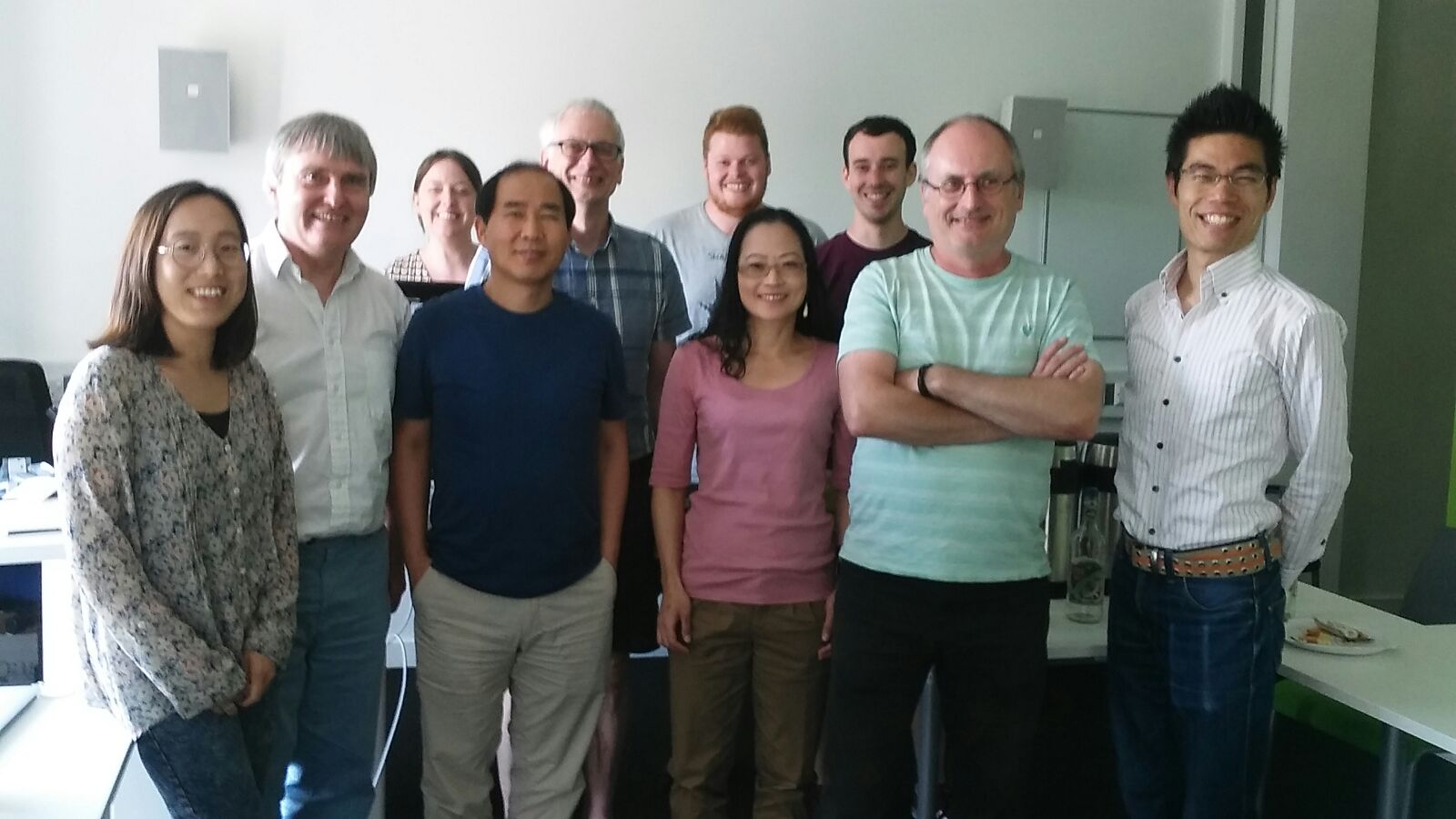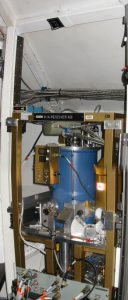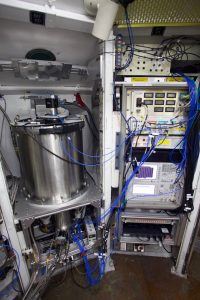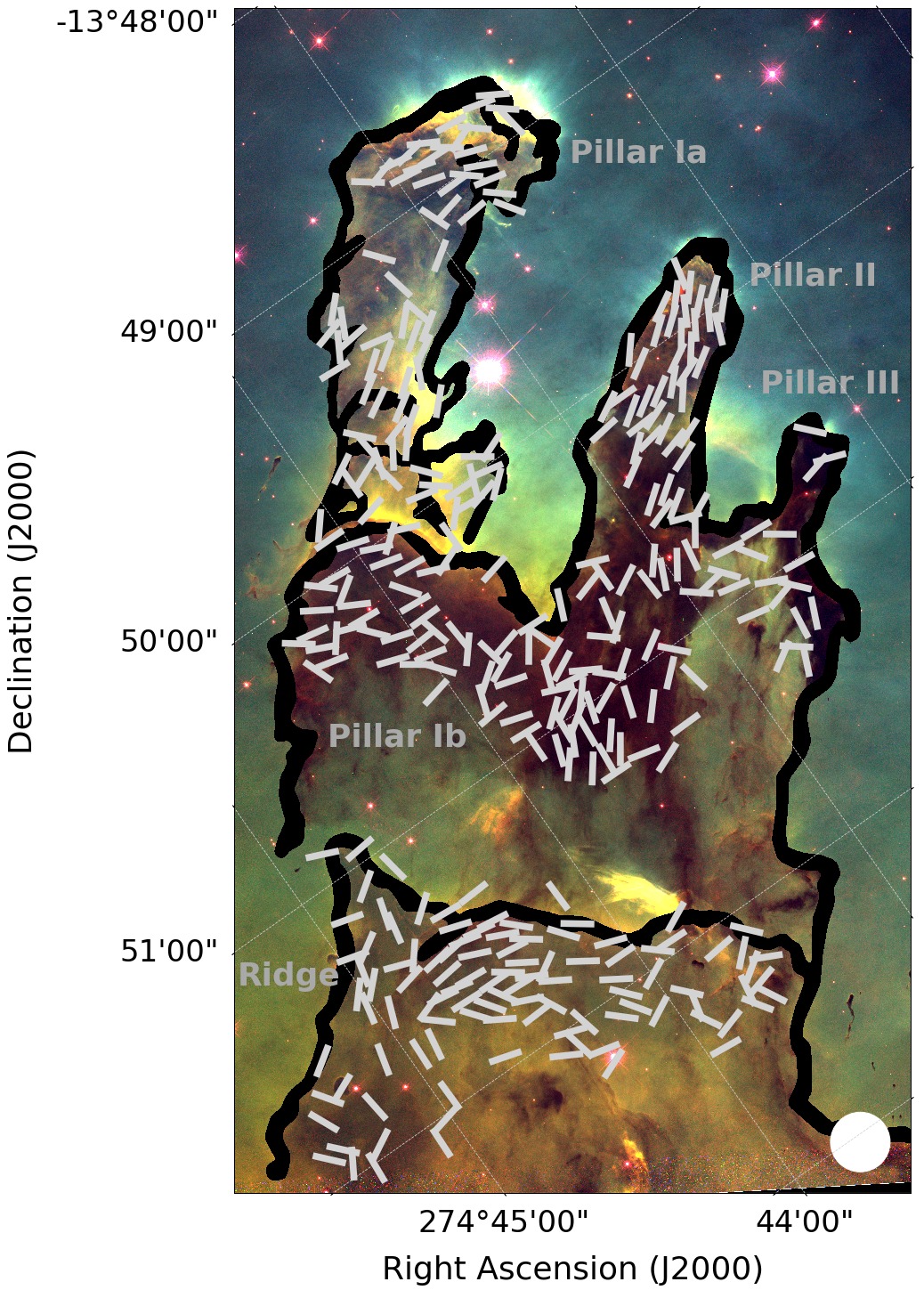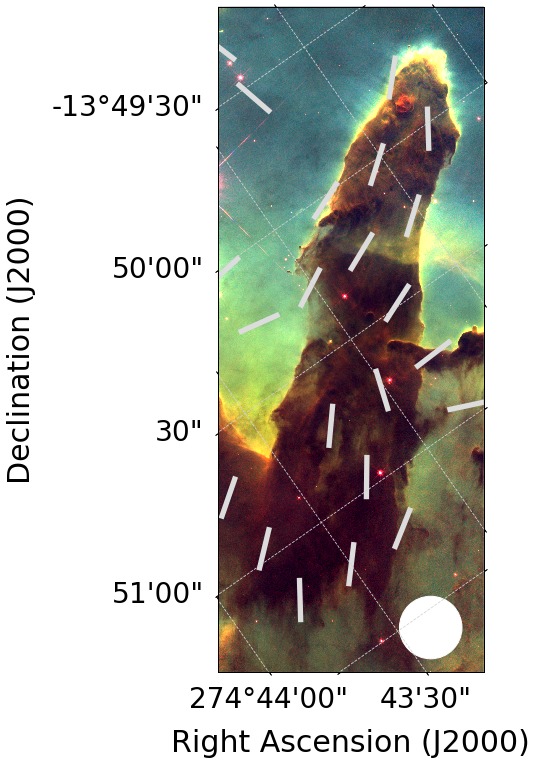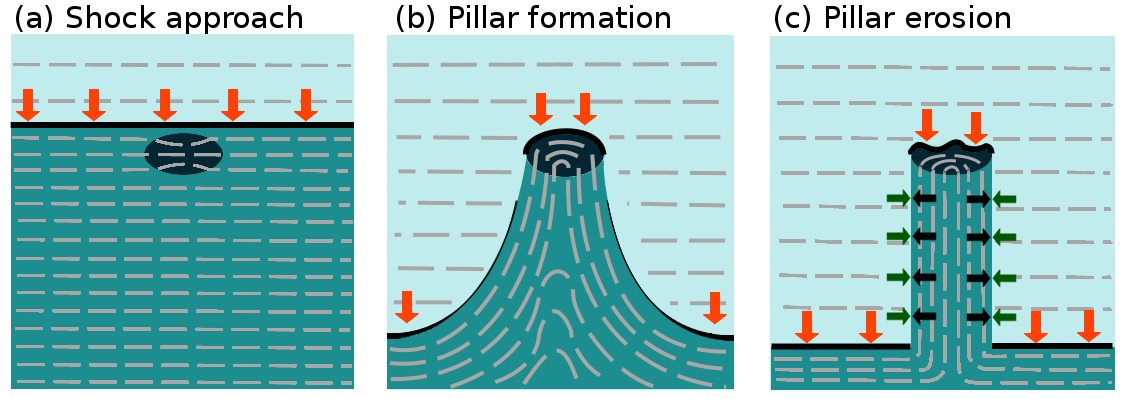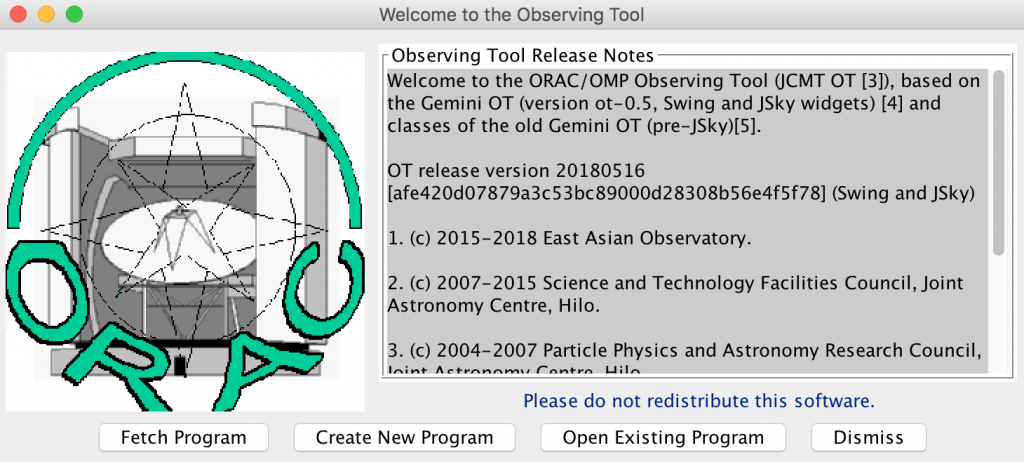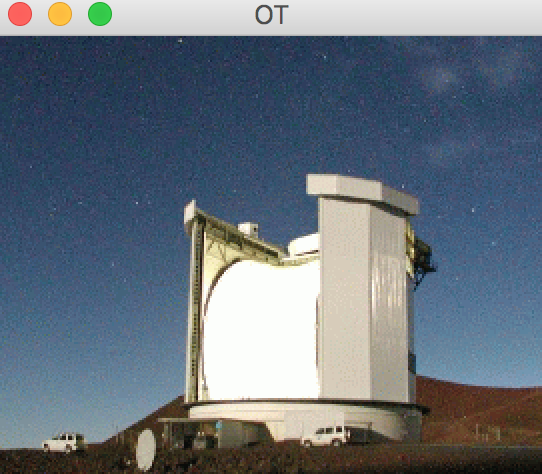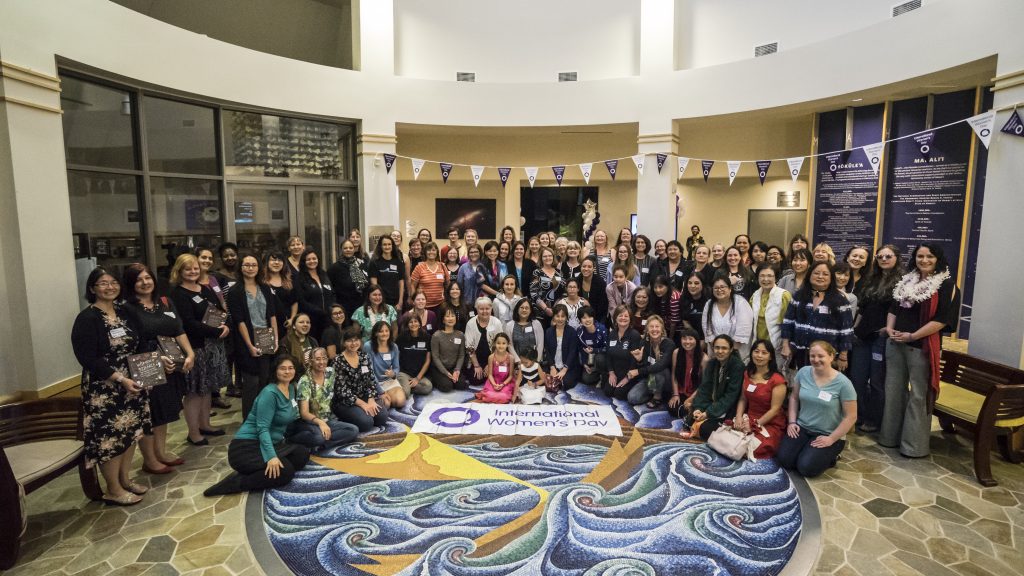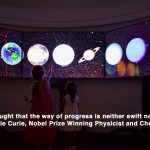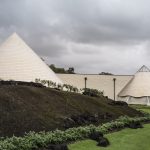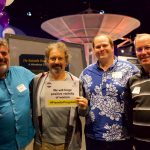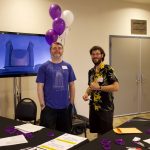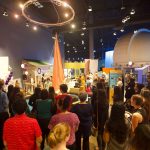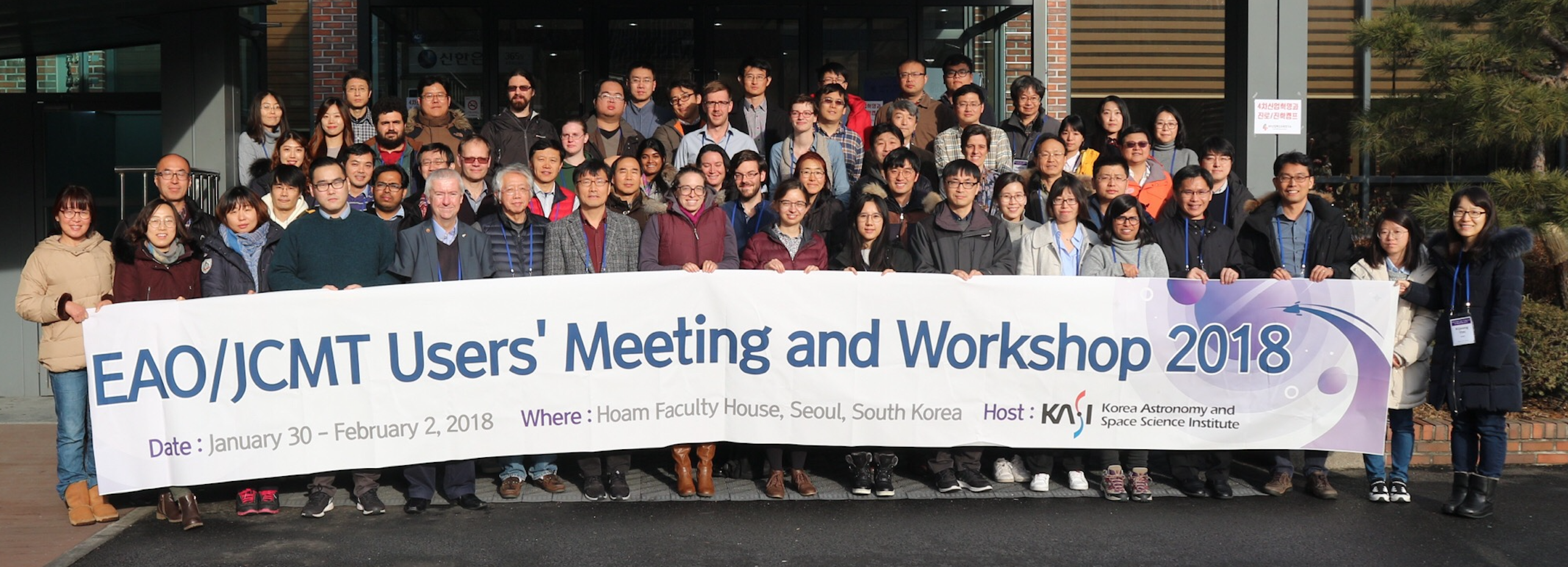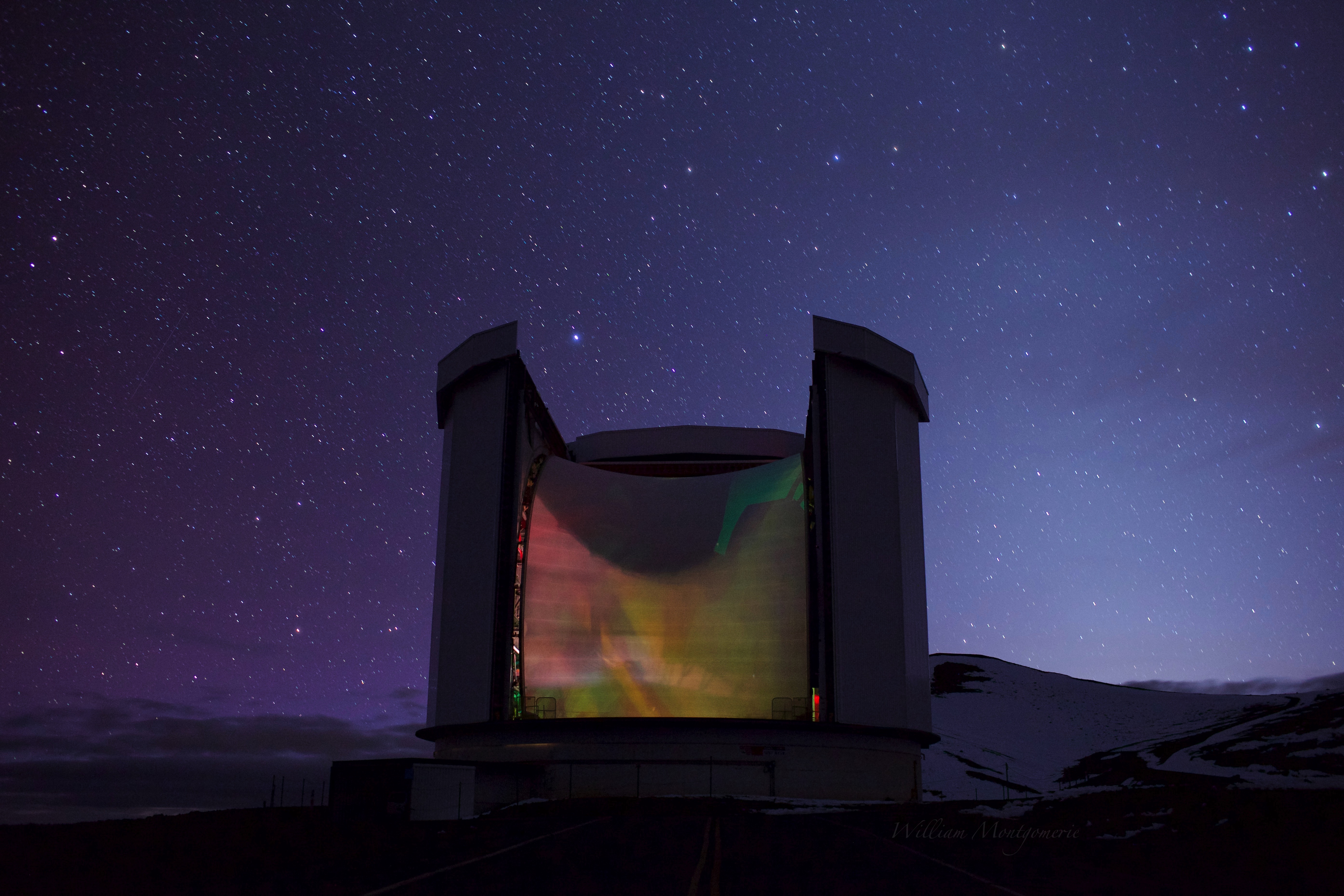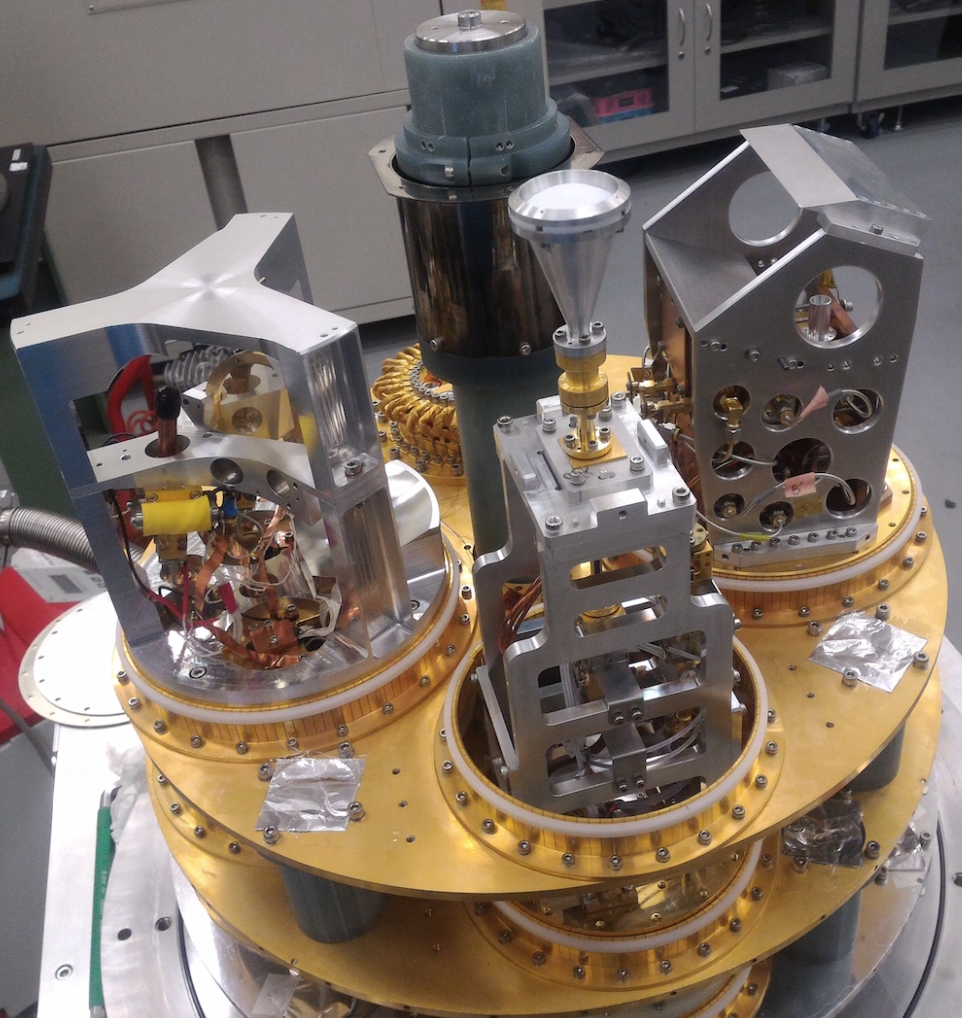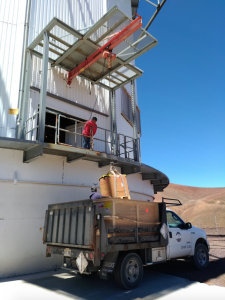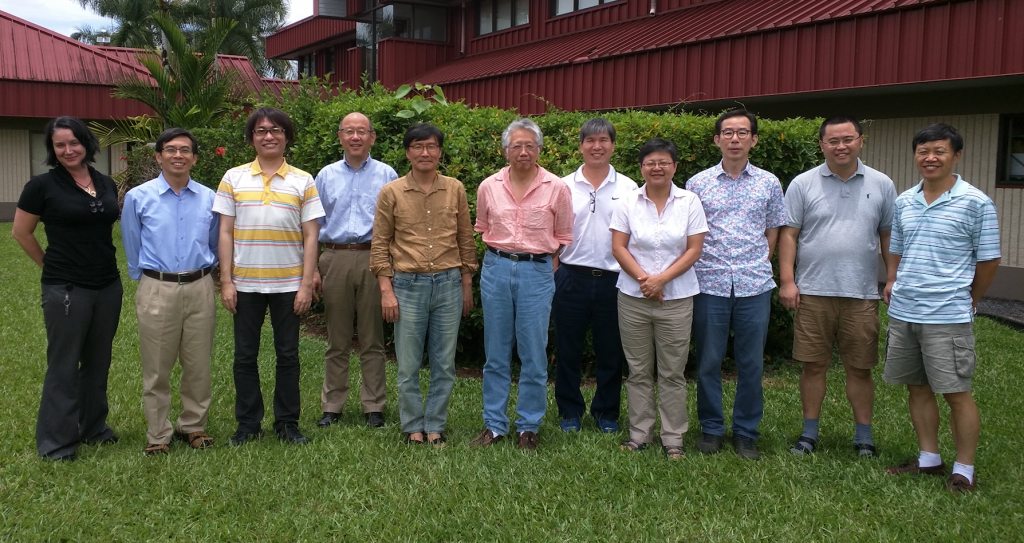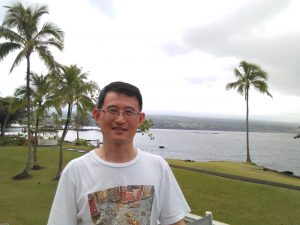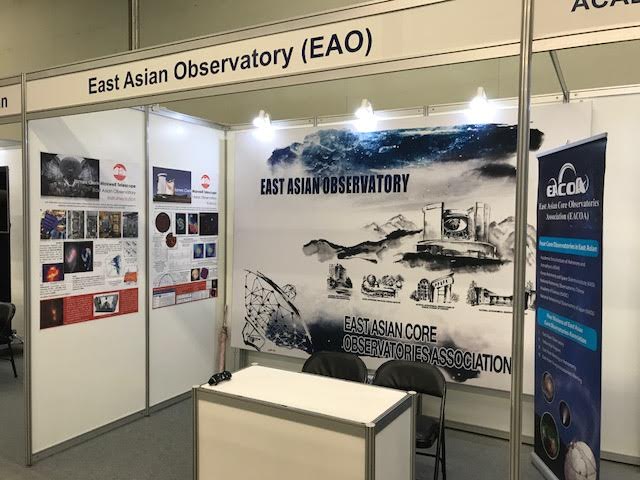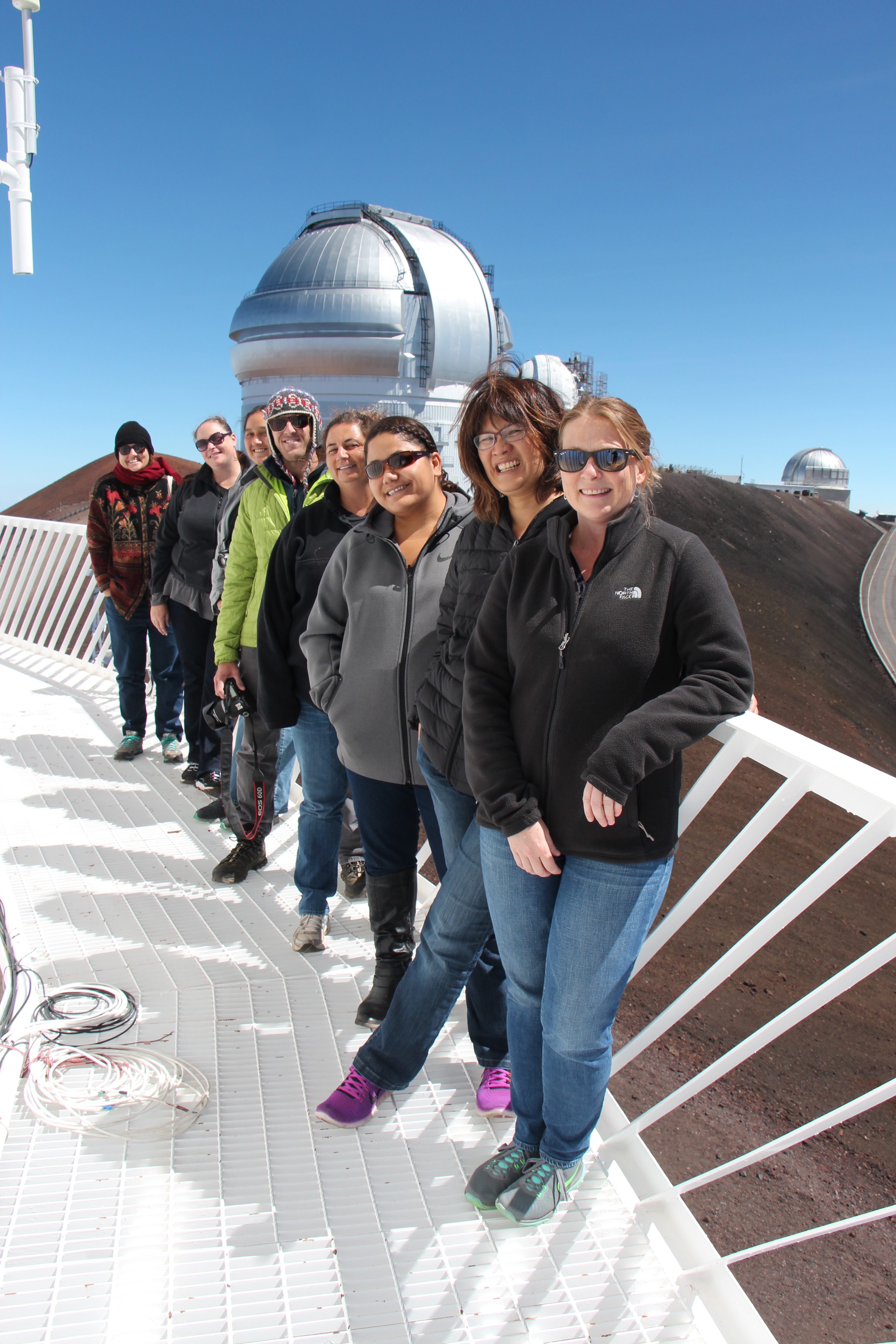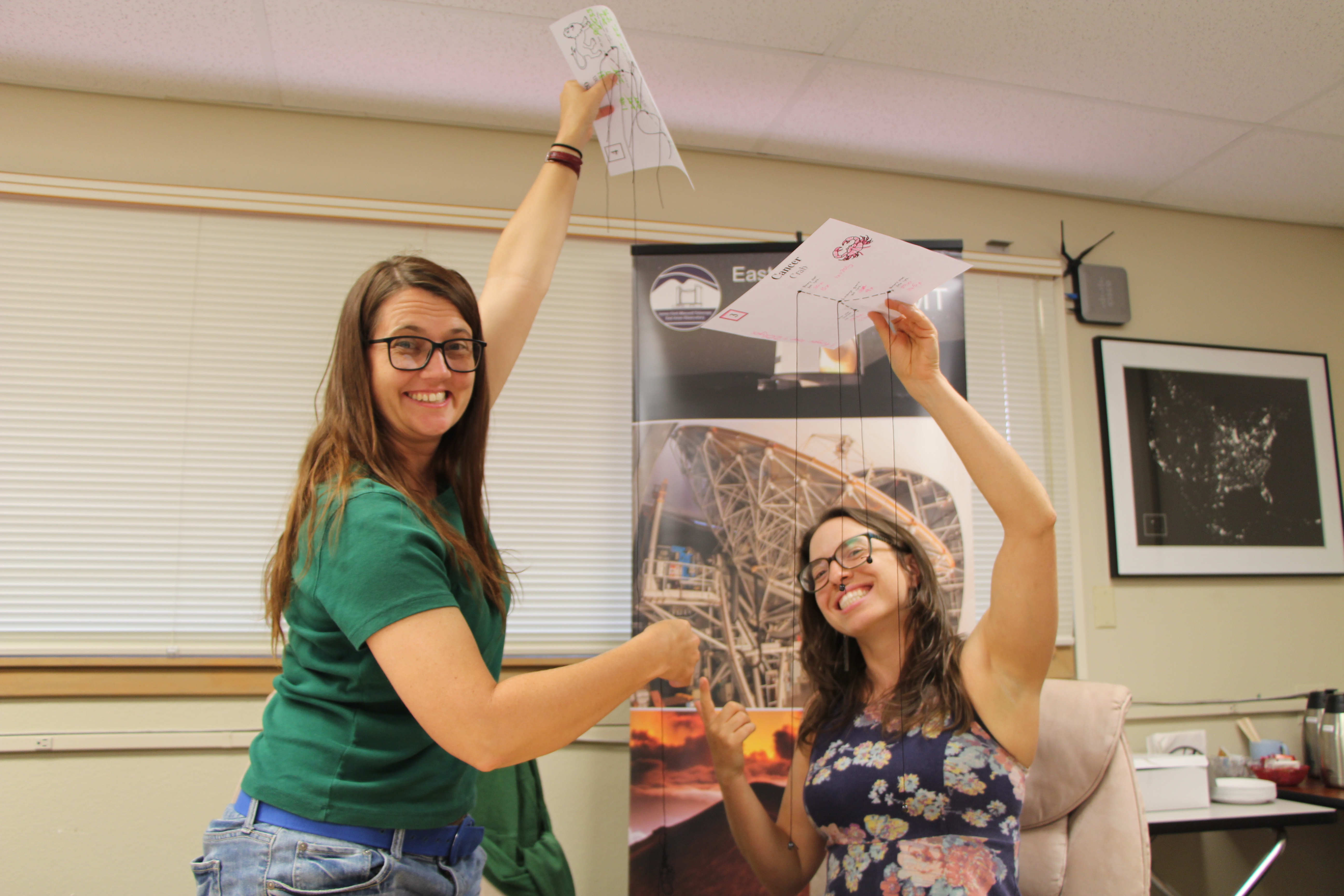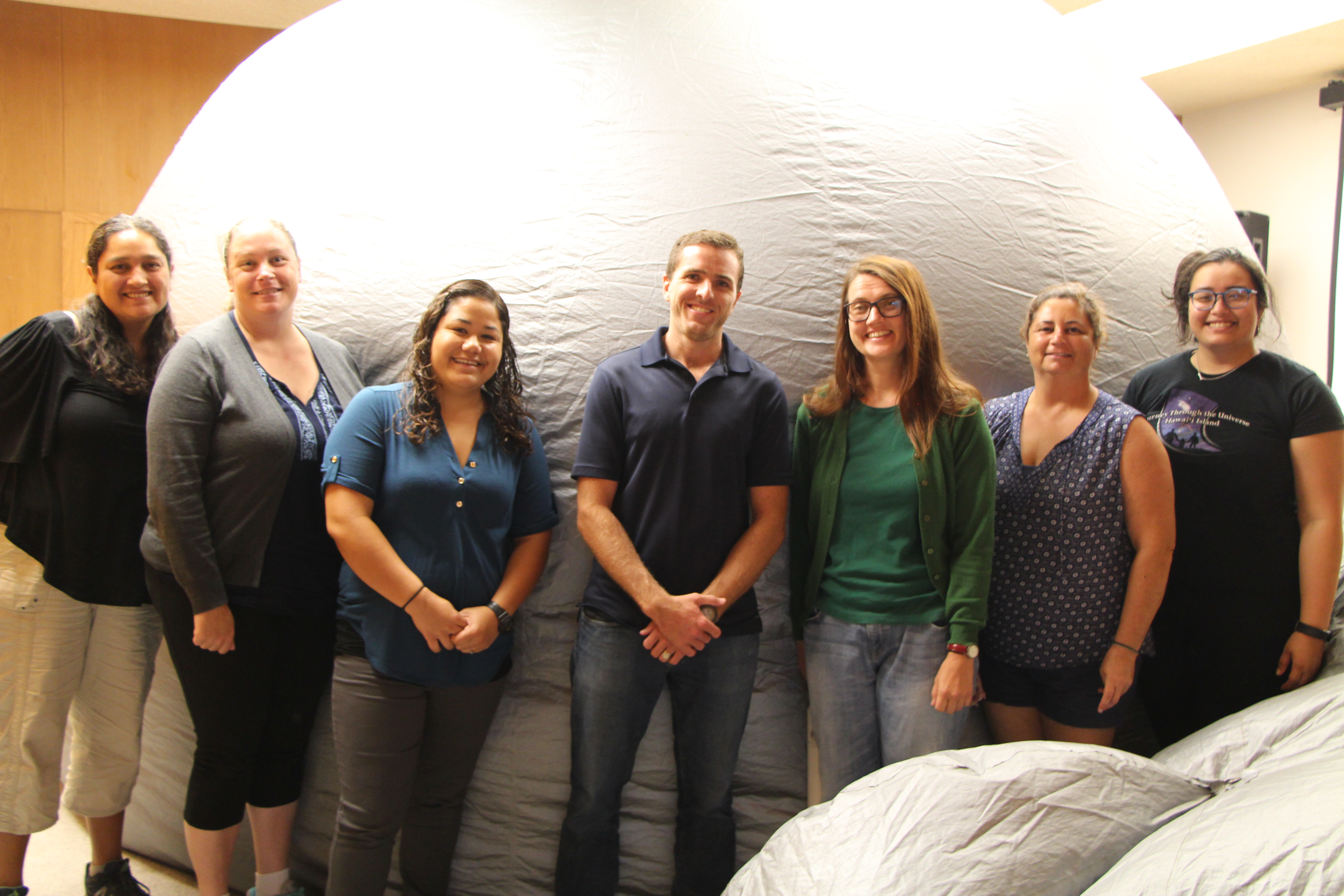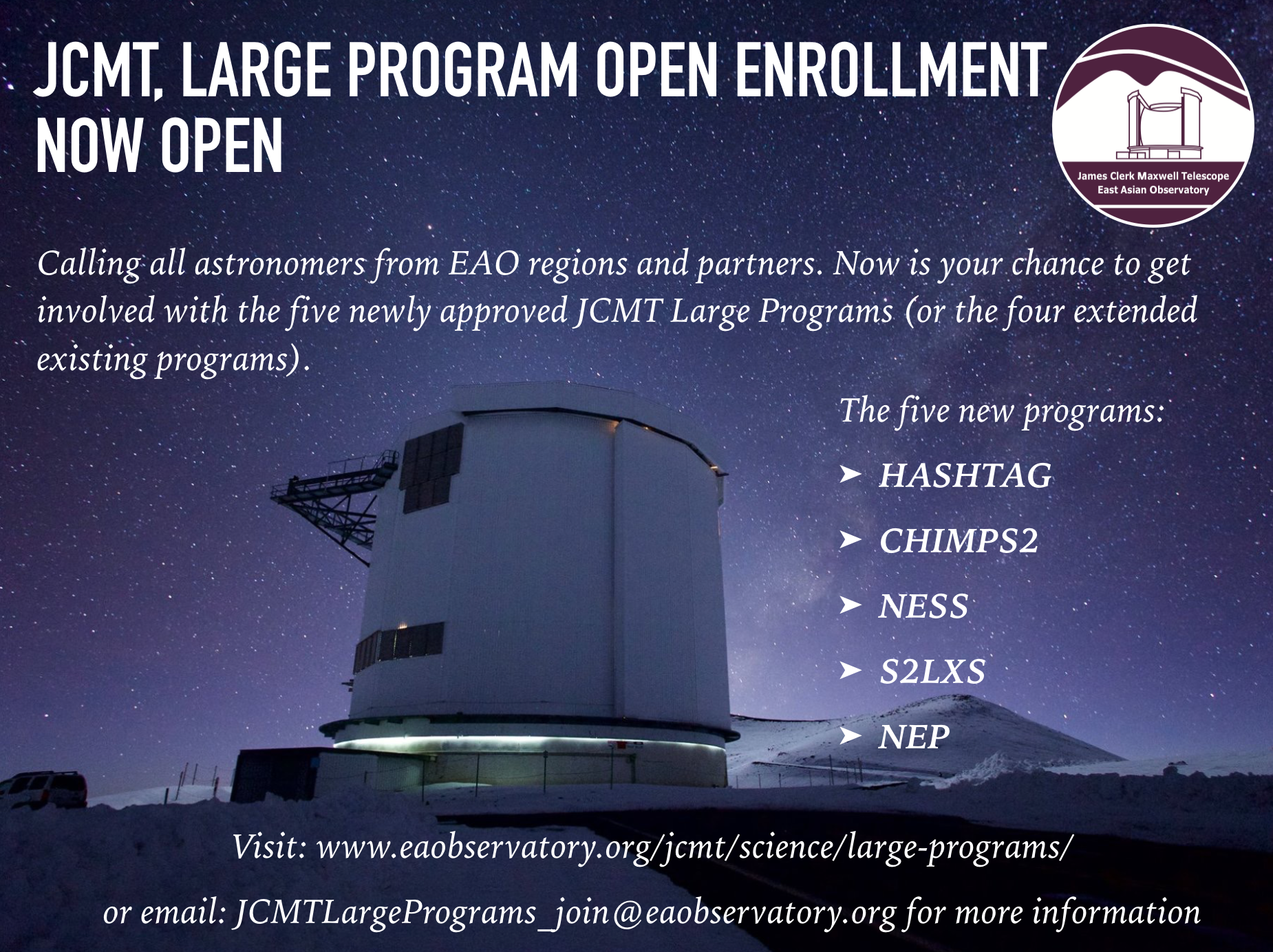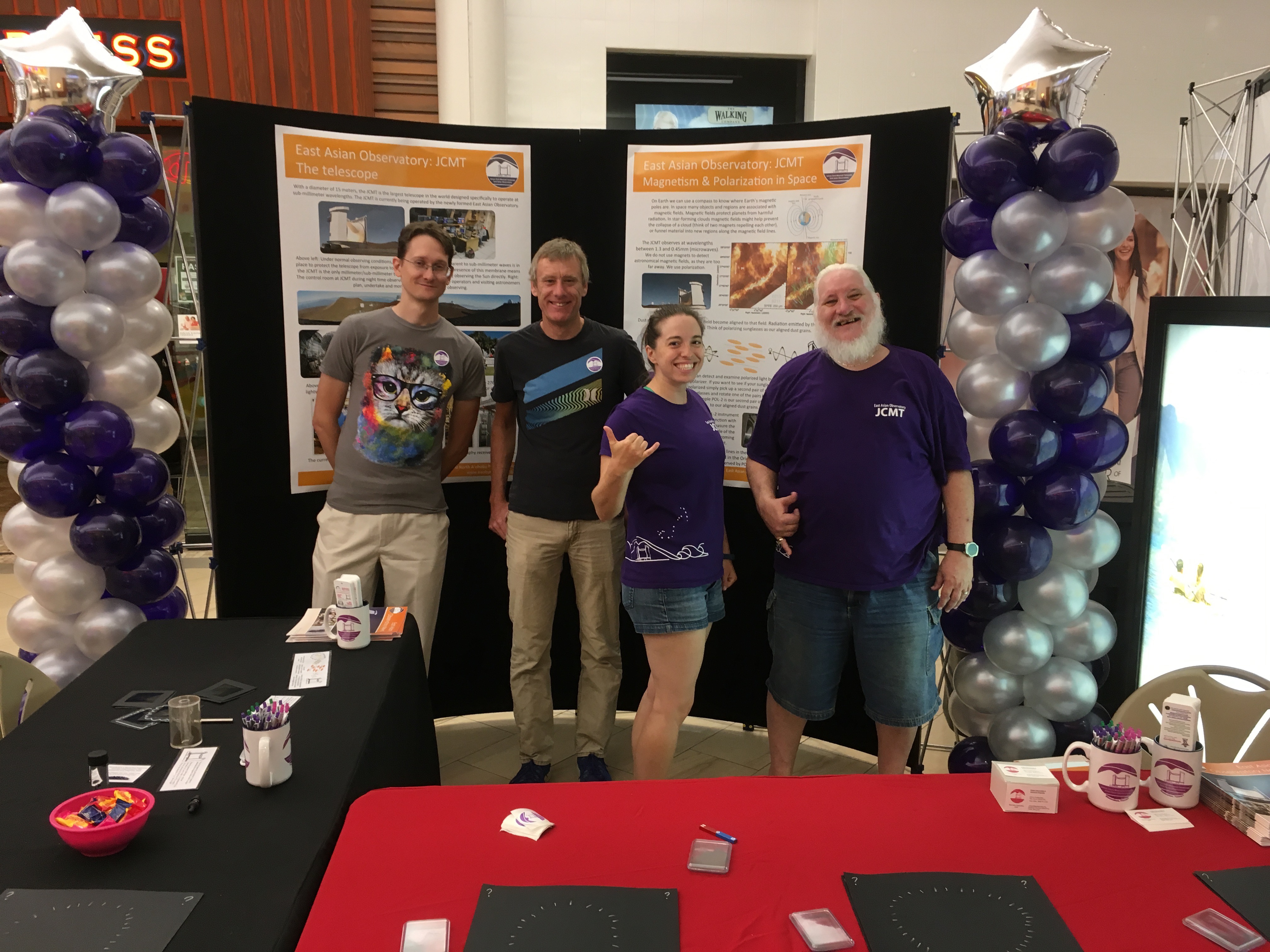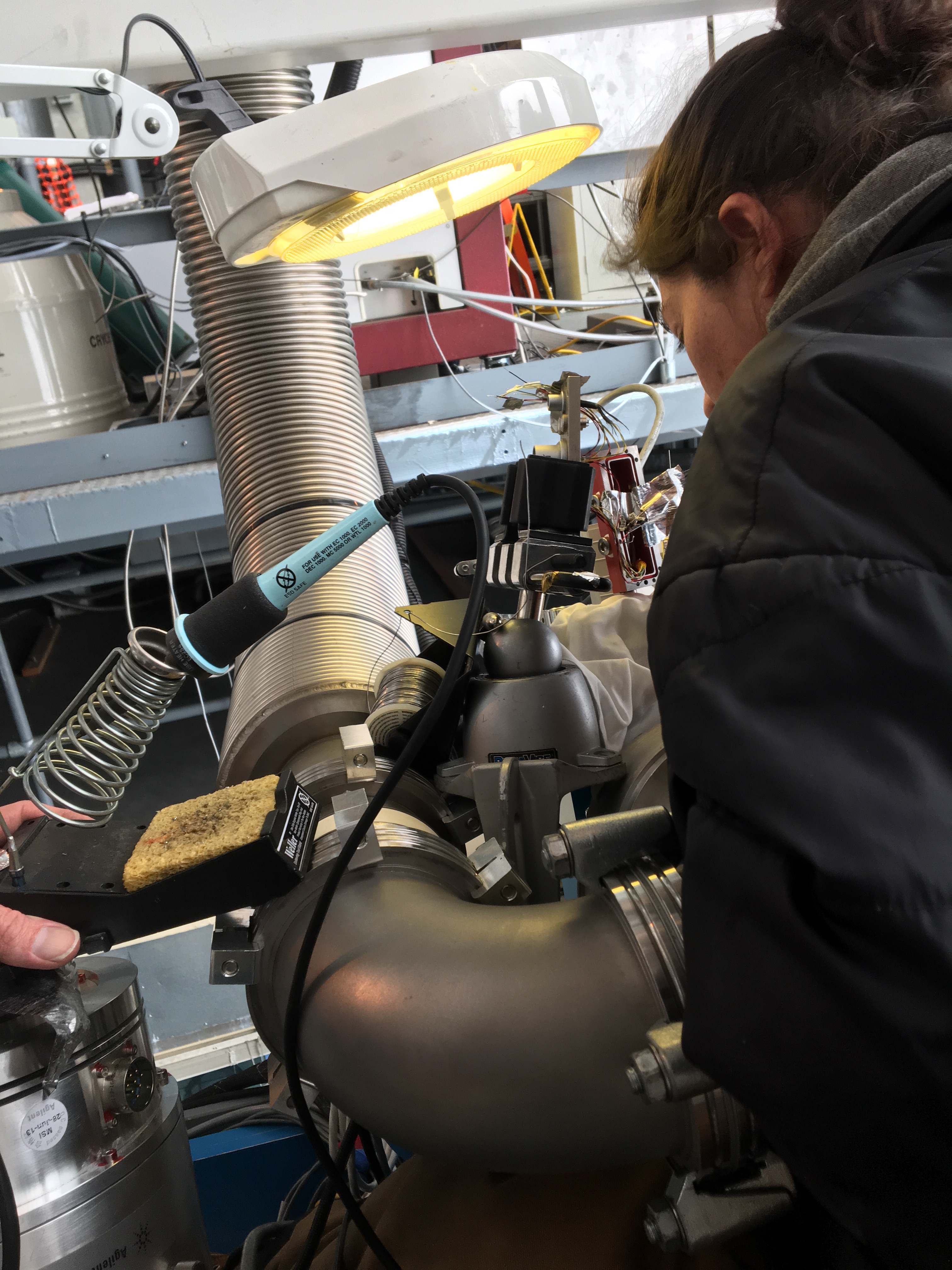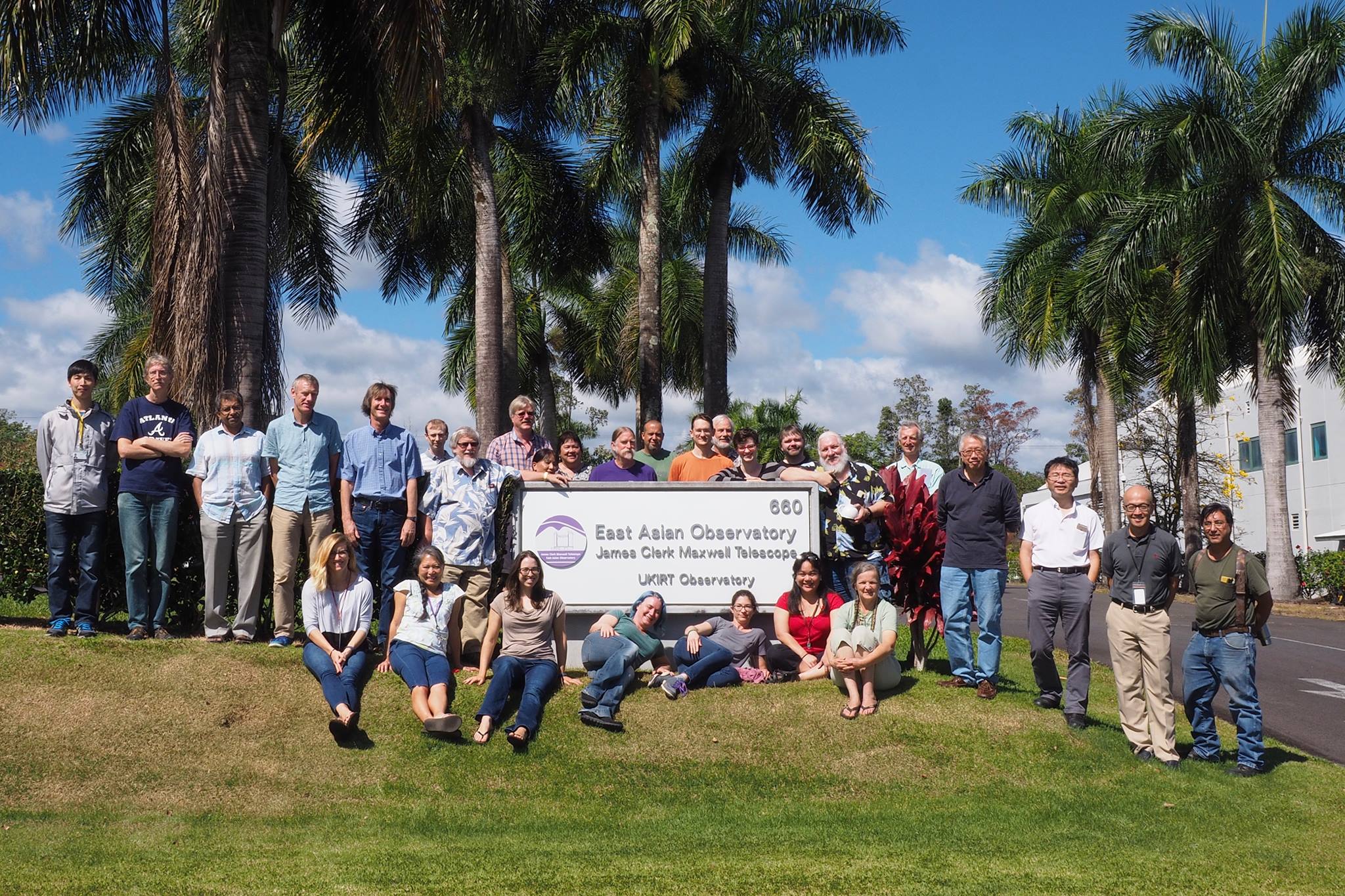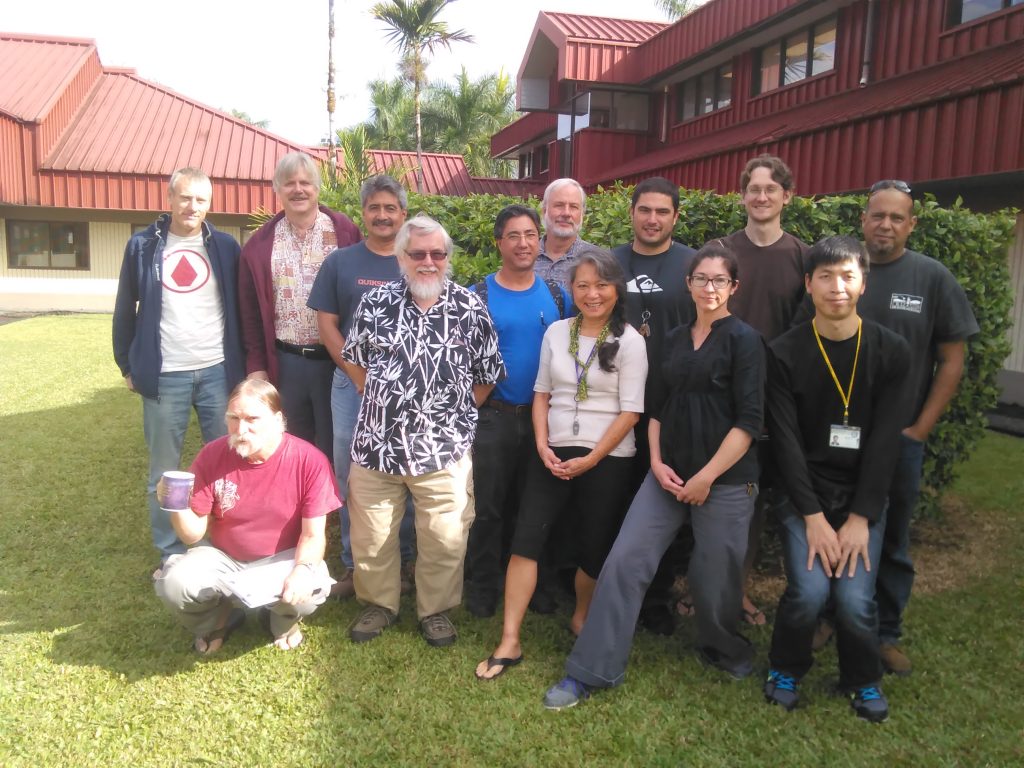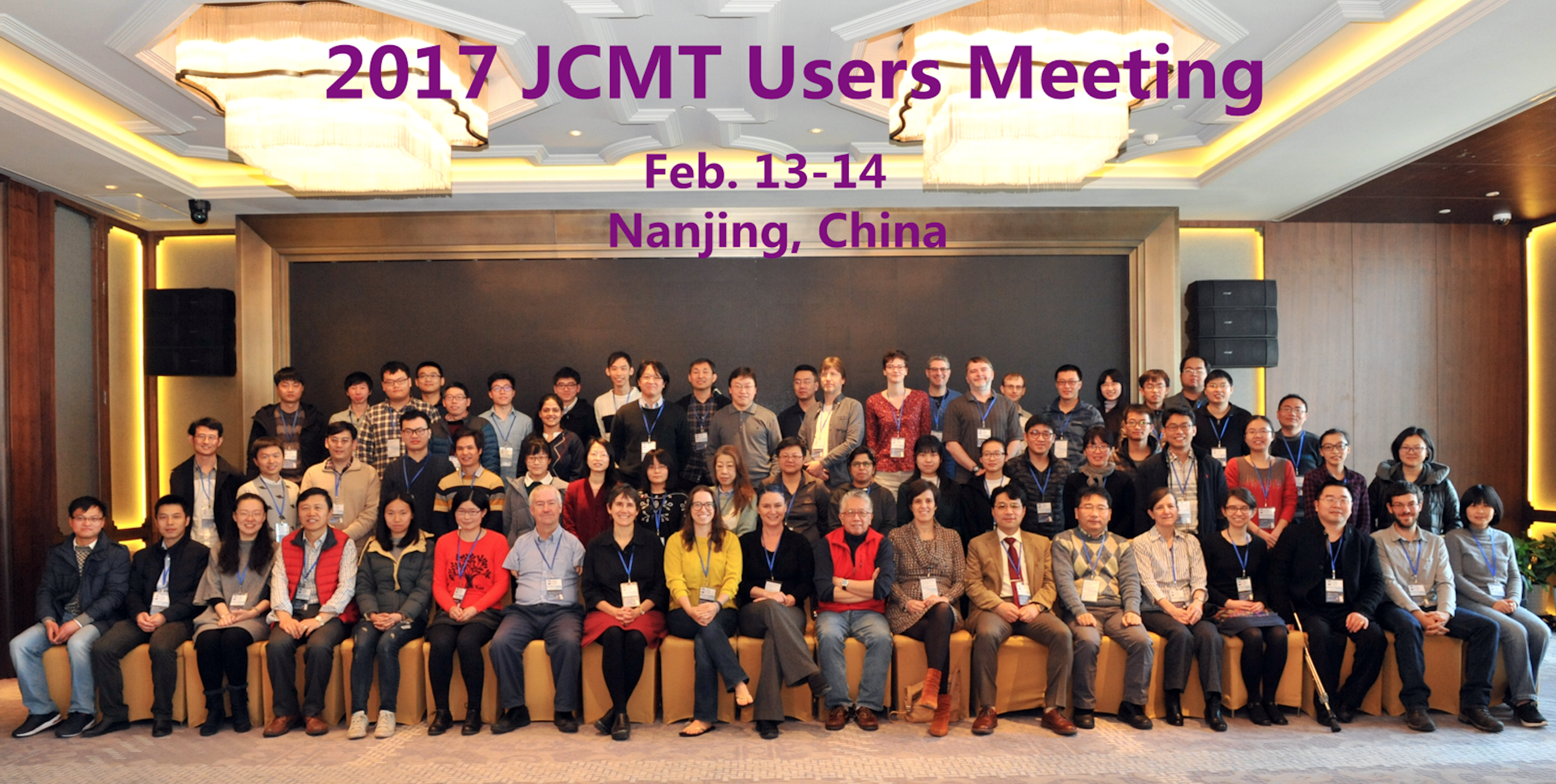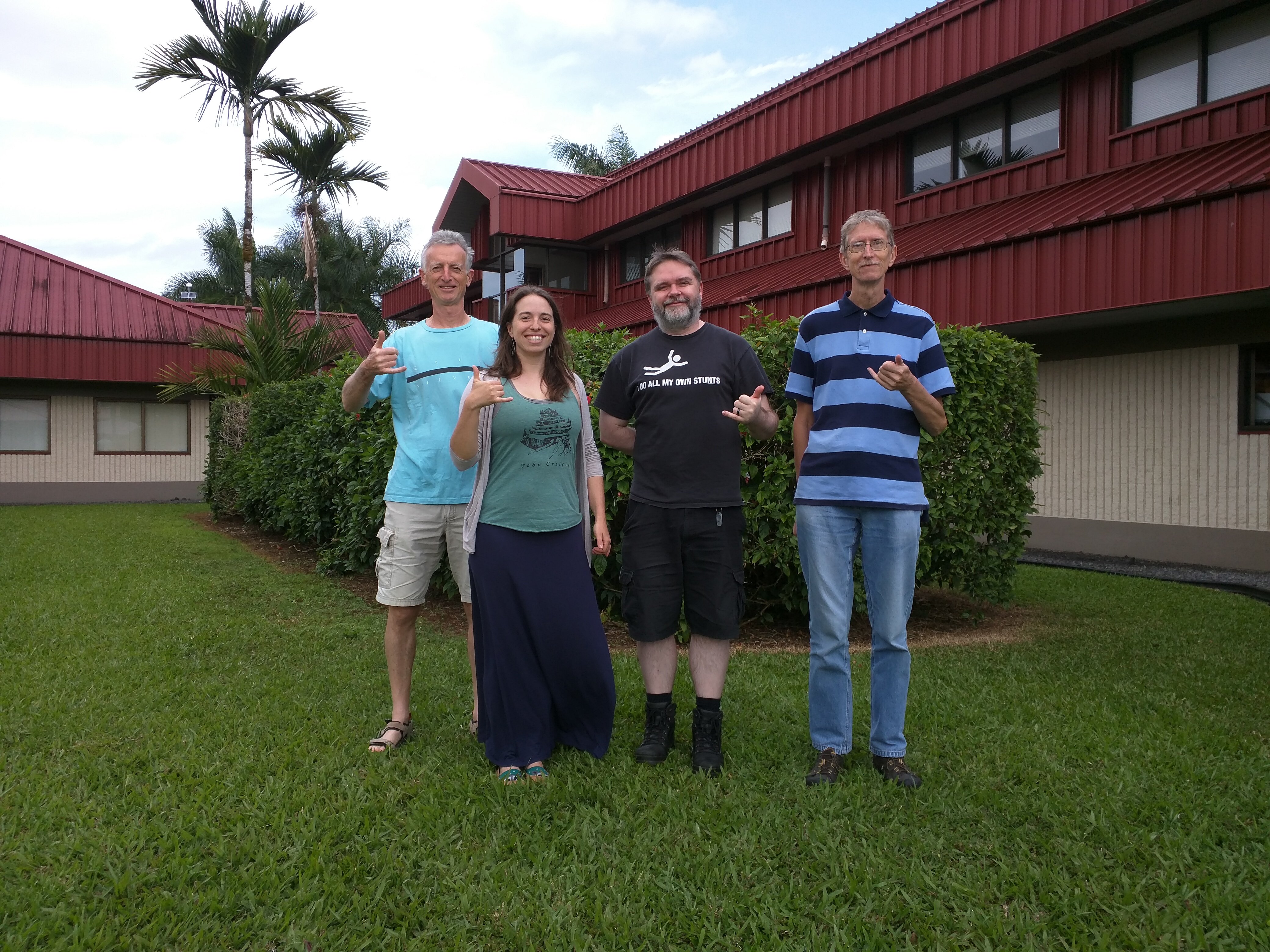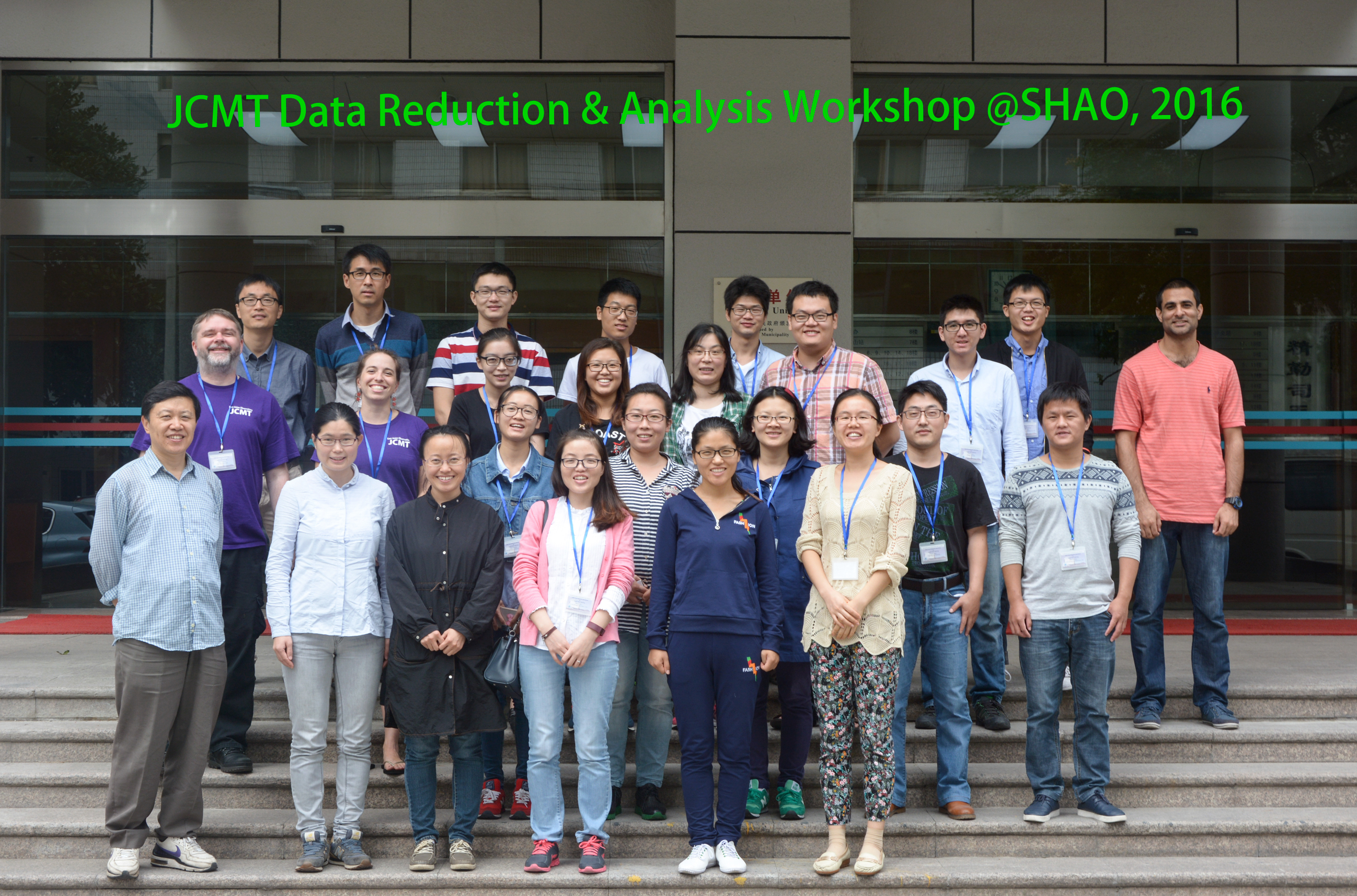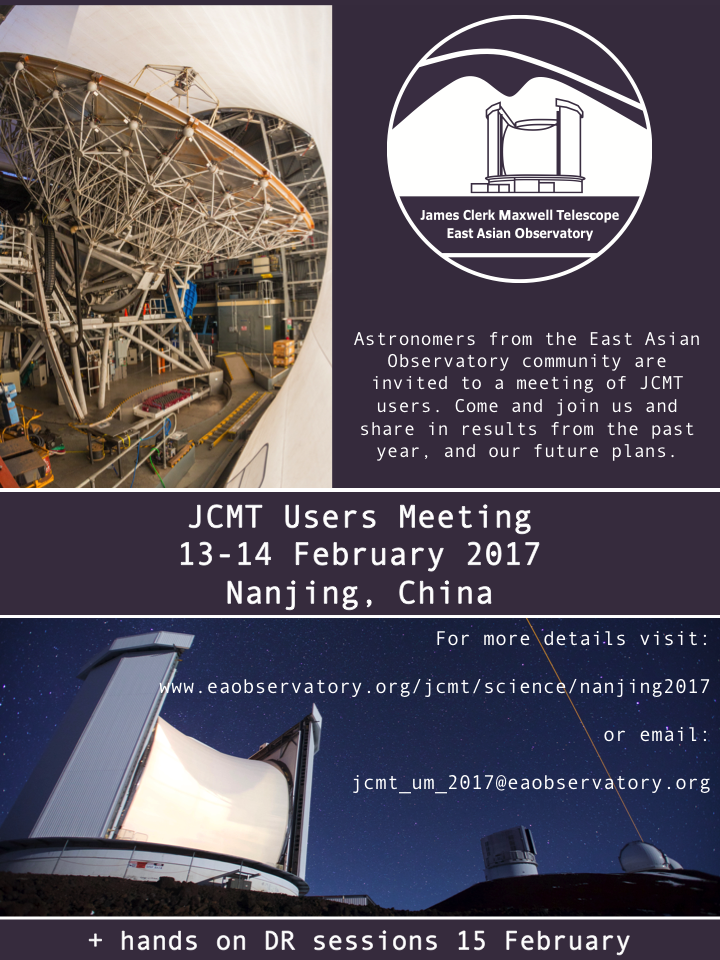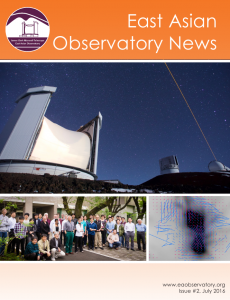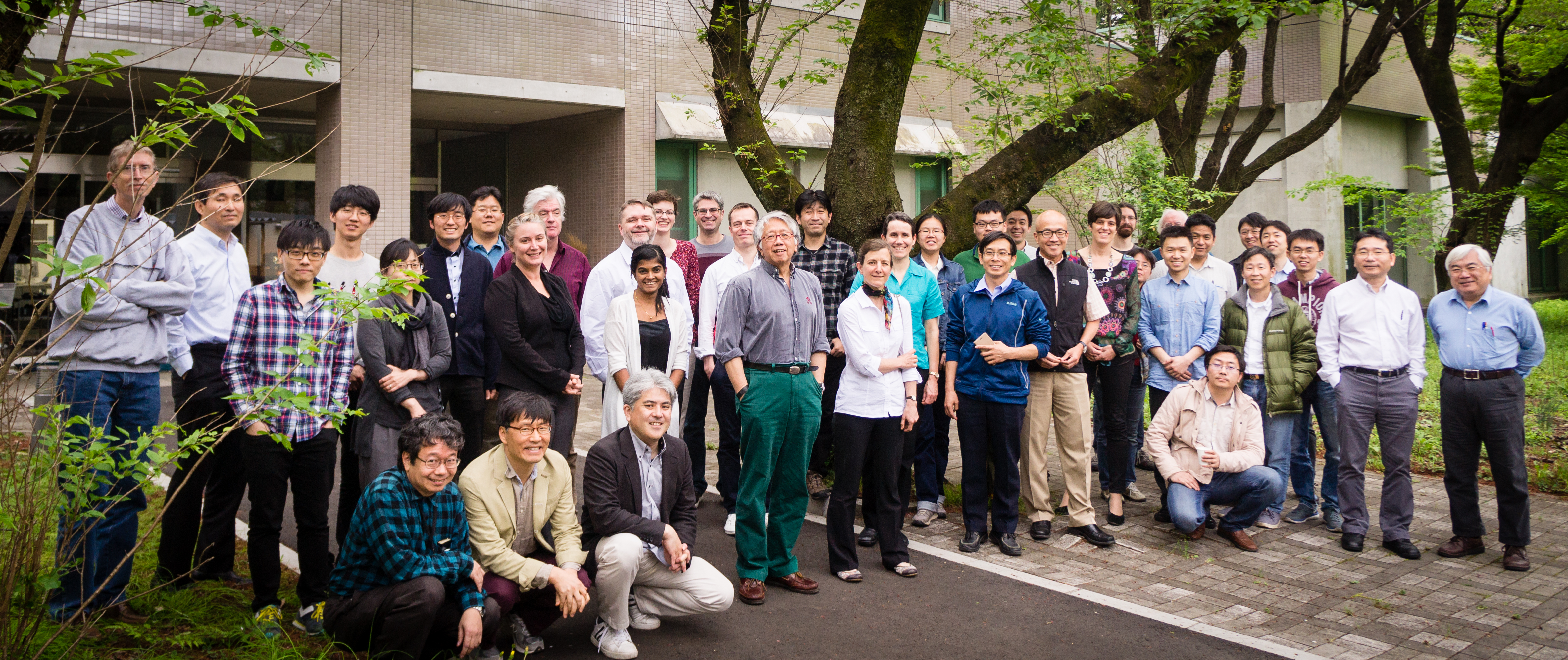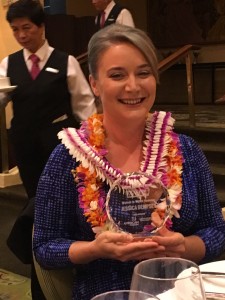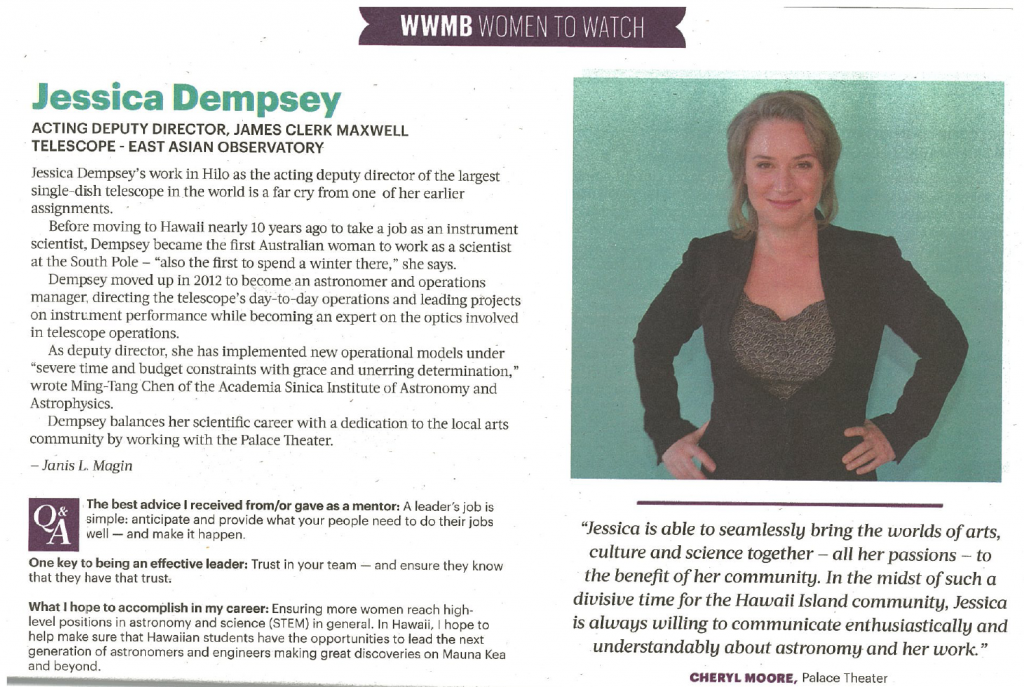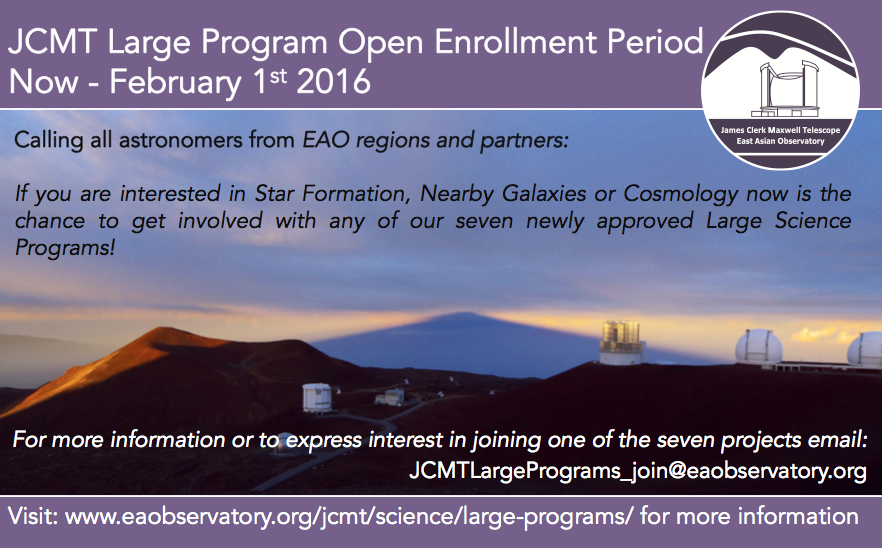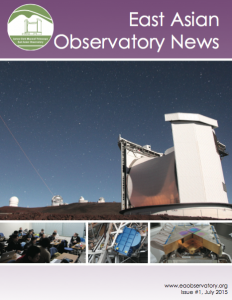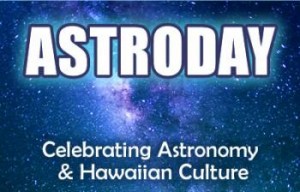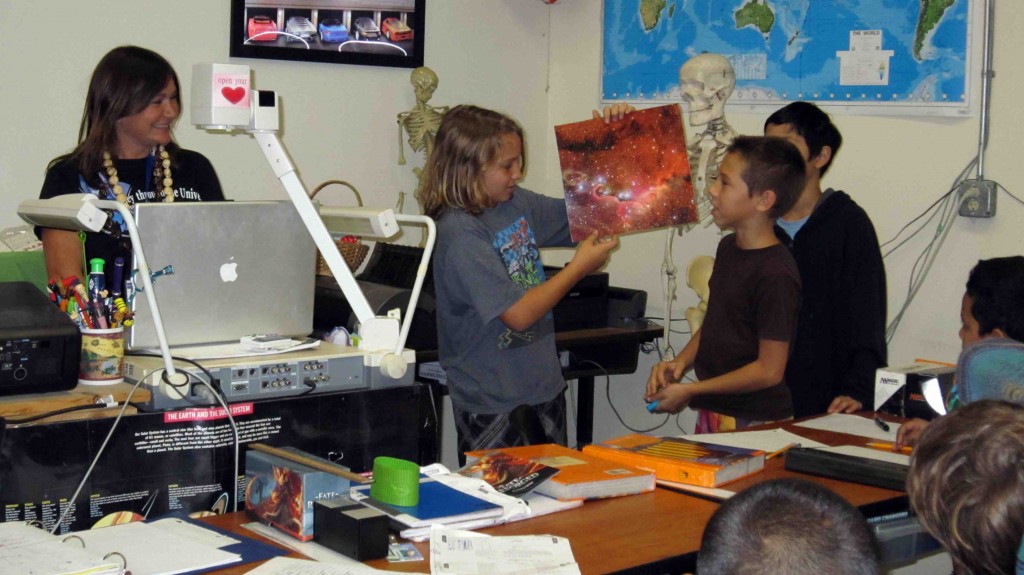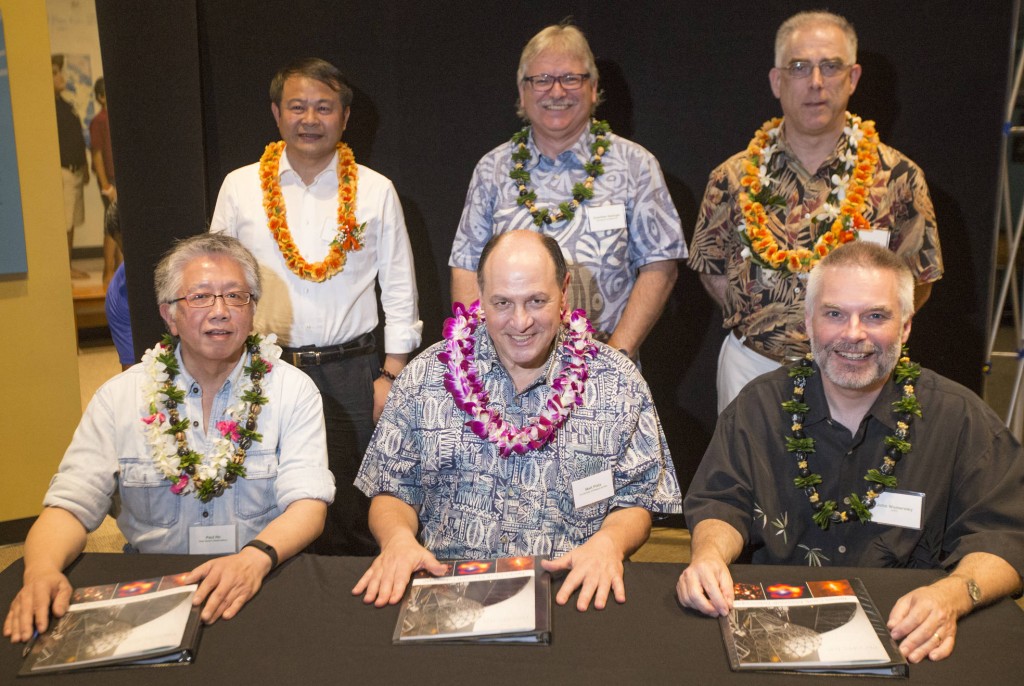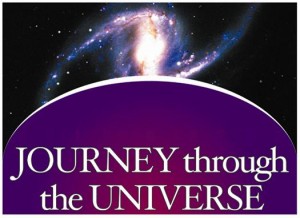A research team led by Japanese astronomers using data taken with the James Clerk Maxwell Telescope (JCMT), have conducted detailed radio spectral observations of molecular gas around the nucleus of our Milky Way Galaxy, Sgr A*.
As a result, the team has discovered two compact molecular clouds that have extremely broad velocity widths at distances of approximately 20 light years from Sgr A*. Despite the fact that these peculiar clouds have large kinetic energies, no energy source has been found there. Thus, the team interprets that each of the clouds is driven by the high-velocity plunge of an isolated (invisible) black hole without a companion star into a giant molecular cloud. This implies that multiple “stray black holes” are floating around a supermassive black hole lurking at the Galactic center.
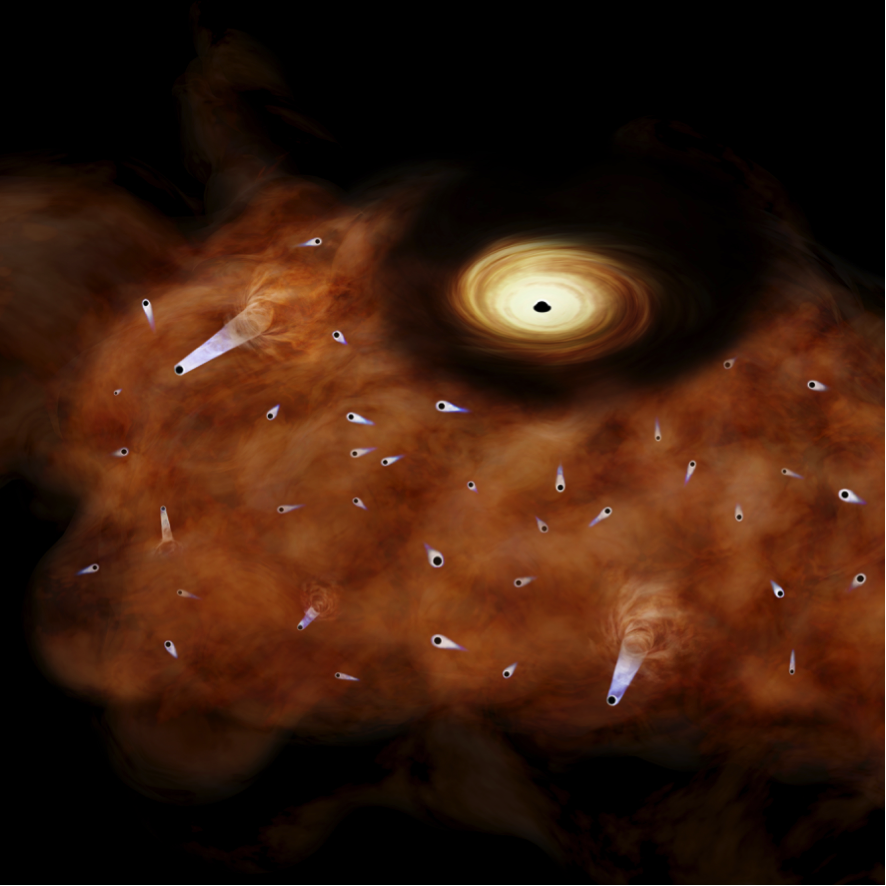
Illustration of stray black holes floating around a supermassive black hole at the Galactic center.
1. Important Points
- The team studied two unusual molecular clouds. These two clouds were discovered in the vicinity of the Galactic nucleus of the Milky Way, Sgr A*. Their motions and physical properties were studied and their motions were deemed to be abnormal.
- The origin of each of unusual clouds cannot be explained by an interaction with a supernova. The clouds are also not explained by a bipolar outflow from a protostar. This implies that the origin is likely to be an obscure astrophysical phenomena.
- As a result of the large kinetic energies observed combined with no a lack of an obvious energy source, the team theorizes that the driving sources may be black holes rapidly plunging into molecular clouds.
2. Research Background
The Galactic nucleus Sgr A* is located at a distance of approximately 26,000 light years from the Earth, and recognized as a supermassive black hole with 4 million solar masses. The origin of the supermassive black hole remains unresolved. In contrast, a stellar mass black hole, which has a mass ranging from about three to several tens of solar masses, is known to be formed by the gravitational collapse of a massive star heavier than 30 solar masses. It is theoretically predicted that several hundred million stellar mass black holes lurk in the Milky Way.
However, the number of black hole candidates currently detected in the Milky Way is only 60. In general, gas and dust drawn by the gravitational force of a black hole constitute an accretion disk around it. After the materials are sufficiently accreted and the accretion disk gets hotter and emits intense electromagnetic waves. Typically stellar mass black holes in the Milky Way have been found by detection of X-ray radiation from their accretion disks. In order for an accretion disk to be continuously shining, a fueling source, i.e. a companion star, must be in the close vicinity of a black hole. However, such black holes (those with close companions) are very rare. Most of back holes are likely to be isolated and inactive. Thus, countless “stray black holes” should be floating in the Milky Way.
3. Research Results
The research team conducted spectral line observations of the Galactic central region within 30 light years of the Galactic nucleus Sgr A* to investigate kinematics and physical properties of molecular gas surrounding the nucleus, using the JCMT. In the observations, the team discovered two unusual molecular clouds (HCN–0.009–0.044 and HCN–0.085–0.094) with diameters of about 3 light years and extremely broad velocity widths wider than 40 km/s (See Figure b below). Each of these unusual clouds appears to stem from a larger cloud. Their motions seem to be different from those of well-known molecular clouds around the nucleus (See Figure a, and c below).
These motions imply enormous kinematic energies (>1047 erg). Such enormous kinetic energy may be produced by an interaction with a supernova explosion or a bipolar outflow form a bright massive protostar. However, no evidence of a supernova or a bright protostar was found toward these peculiar clouds. The origin is probably “something” other than well-known astrophysical phenomena; inactive stellar mass Black Holes.
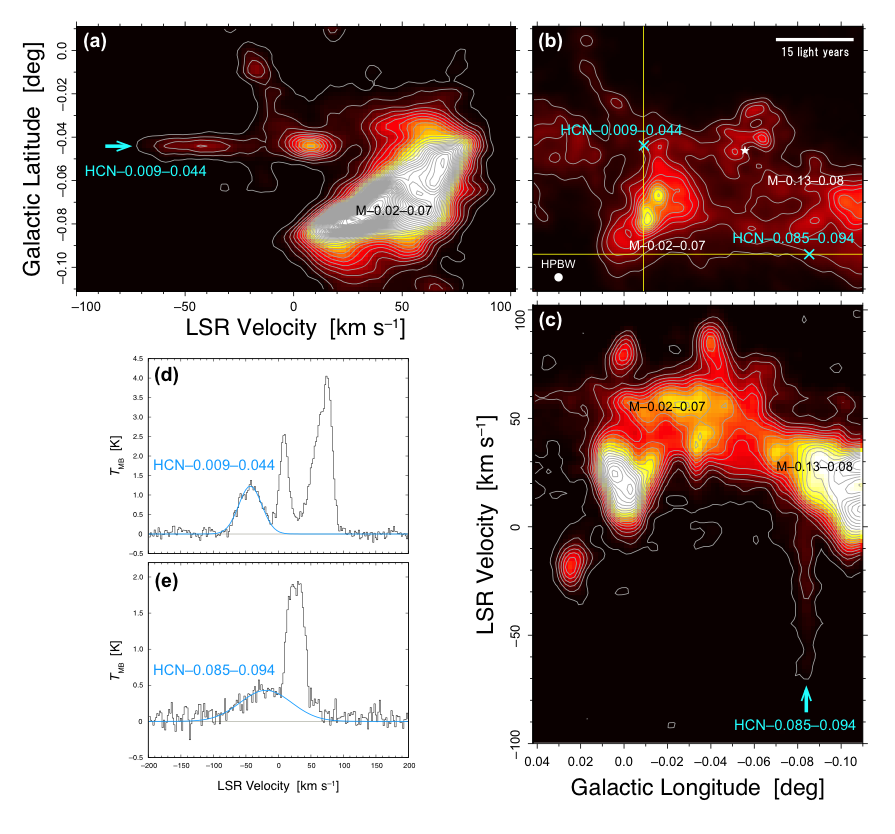
The data used to make this discovery (a) Position-velocity diagram along the yellow vertical line in the panel (b). (b) Integral intensity map of the Galactic central region around Sgr A* (shown by a white star) in the hydrogen cyanide (HCN) 354.6 GHz spectral line. The light-blue cross marks indicate the locations of the discovered peculiar compact clouds (HCN–0.009–0.044 and HCN–0.085–0.094). (c) Position-velocity diagram along the yellow horizontal line in the panel (b). (d, e) The spectral lines detected toward the peculiar clouds.
The team proposes that the high kinematic energy results from: “a high-speed compact gravitational source plunging into a molecular cloud and the gas is dragged along by the gravity of the compact source to form a gas stream.”
According this “plunge scenario”, such unusual clouds can be formed in two cases as follows:
- A massive compact object with a mass larger than about 10 time the mass of our Sun plunges with a high velocity of about 100 km/s into a molecular cloud.
- A compact object with a mass similar to that of the Sun plunges with a ultra high velocity of about 1000 km/s into a molecular cloud.
In the case 1), the candidate for the plunging object is a massive star or black hole. In the case 2), the candidate is a hypervelocity star which moves so fast that it can escape from the gravity of the Galaxy. However, no hypervelocity star has been found in the Galactic center and the number is theoretically predicted to be much less than that of black holes. Therefore, the driving sources of the two discovered clouds are likely to be massive stars or black holes. In addition, no bright massive stars have been found toward these clouds. Thus, a “stray black hole” floating around the supermassive black hole is the most plausible candidate for each of the driving sources of the two clouds.
4. Research Significance
This work is very meaningful since the possibility that a number of “stray black holes” are floating around a supermassive black hole at the Galactic center was indicated by the observational study for the first time.
The team has already discovered the peculiar molecular cloud in the Galactic disk (Bullet) that may also be driven by a high-velocity plunge of a stray black hole (Yamada et al. 2017, https://www.nao.ac.jp/en/news/science/2017/20170202-aste.html).
These studies which are based on spectral line observations of molecular gas suggest a new method of potentially discovering inactive isolated black holes that are undetected by traditional method such as X-ray observations. The number of black hole candidates is expected to dramatically increase by applying research methods similar to this work.
Recently, by detection of gravitational waves, it has been confirmed that black holes merge and grow. The team has also discovered a candidate for an intermediate mass black hole with a mass of 100 thousand solar masses at a distance of about 200 light years from the Galactic nucleus
(Oka et al. 2017, https://www.nao.ac.jp/en/news/science/2016/20160115-nro.html).
This intermediate mass black hole and stray black holes discovered in this work possibly contribute to growth of the supermassive black hole in future.
Inquiries about the research
Professor Tomoharu Oka
Department of Physics
Keio University Science and Technology
TEL: +81-45-566-1833 FAX: +81-45-566-1833
E-mail: tomo@phys.keio.ac.jp
http://aysheaia.phys.keio.ac.jp/index.html
These observation results were published as Takekawa et al. “Discovery of Two Small High-velocity Compact Clouds in the Central 10 pc of Our Galaxy” in the Astrophysical Journal Letters in July 2017.
The team behind this work are Shunya Takekawa, a Ph.D. student at Keio University, Japan, and Tomoharu Oka, a professor at Keio University.
This study was supported by a Grant-in-Aid for Research Fellow from the Japan Society for the Promotion of Science (15J04405).
Hawaii Island Inquiries about the research
Dr Harriet Parsons
EAO/JCMT
660 North A’Ohoku Place
Hilo, Hawaii, 96720
E-mail: outreach@eaobservatory.org
– 2017/07/18



